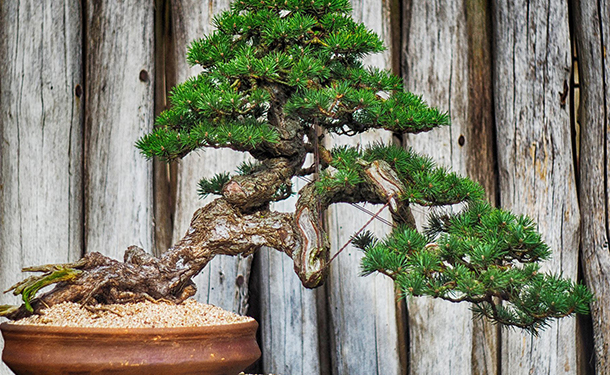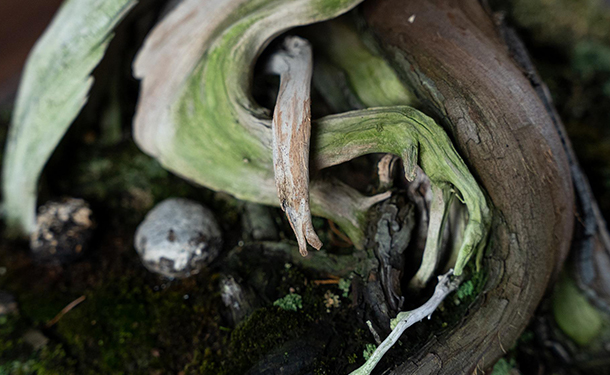Prevent your bonsai trees from withering and and avoid its premature death. Knowing how to care for a Bonsai tree will help you enjoy a thriving miniature of your favorite tree species for years or even decades.

thetreecareguide.com gathered essential information and tips on how to care for your Bonsai tree and help it thrive disease and pest-free.
Bonsai Tree Care
Though Bonsai trees are more delicate than regular trees and plants, a few simple pointers should help you successfully take care of your miniature. Consider the following care information and tips:
1. Bonsai Tree Location
In most homes, the only place where a Bonsai will thrive is at a South facing window. A lot of light is essential for your tree’s health. If your Bonsai is placed just a few feet away from a window, the light intensity will drop significantly, slowing down or stopping its growth and ultimately killing it.
2. Watering a Bonsai Tree
The most crucial element of Bonsai tree care is watering it. How often a tree needs to be watered depends on:
- The tree species
- Tree size
- Soil mixture
- Climate
- Pot size
- Time of year
Do not water your tree if the soil is moist, but avoid letting the tree dry out. As a beginner, you can use your finger to check (one centimeter deep) the soil moisture. If it’s dry, water your tree. With time, you’ll be able to see rather than feel when it’s time to water your tree.
Tip: Your tree’s soil-mixture influences how often your trees will need to be watered. Bonsai trees typically thrive on a mixture of ½ akadama, ¼ pumice, and ¼ lava rock. For those unable to water their plants regularly, use a soil mixture that retains more water. This can be accomplished by using more akadama or including compost in your soil.
Note: Akadama is a naturally occurring, granular clay-like mineral used as a soil component for bonsai trees and other container-grown plants.
3. Fertilizing a Bonsai Tree
Trees growing normally will naturally extend their root system in search of water and nutrients. Since Bonsai tree root systems are confined to pots, fertilizing them regularly during the growing season is essential for them to thrive.
Typical indoor Bonsai trees can be fertilized year-round, while older and more developed trees can be fertilized during the species’ growing season (typically early spring through mid-fall). Tree fertilization varies depending on:
- Tree health
- The tree species
- Time of year
- Tree development
All fertilizers contain three fundamental elements; Nitrogen, Phosphorous, and Potassium (commonly labeled as NPK):
- Nitrogen increases leaf, stem, or “above ground” growth
- Phosphorus encourages healthy root, fruit, and flower growth
- Potassium is known to enhance a tree’s overall health
Growers and gardeners will use different ratios of NPK for different tree species and during different seasons.
Tip: Look for fertilizers containing micronutrients like Iron, Manganese, Boron, Molybdenum, Zinc, and Copper for increased growth and health.
4. Repotting a Bonsai

All bonsai trees need to be repotted and root pruned to maintain continued good health. Keep in mind that as the top of your tree grows, so shall its roots. Root pruning will encourage new growth, while repotting offers an excellent opportunity to replace old, depleted soil.
Here’s how to repot your Bonsai tree:
- Lift the tree from its pot – The root mass will likely match the contours of your pot
- Use a root hook – Gently loosen and comb out the tangled bottom third of the root ball
- With sharp and clean pruning shears – cut off the bottom third of the root ball
Tip: Shorten the large, heavy roots. A bonsai tree’s most essential roots are the more delicate feeder roots.
- Prepare the pot – Add a light layer of fresh soil to the pot, with a mound of soil in the middle
- Replace the tree – Place the tree in its original position and spread the roots out evenly
- Add soil – Add more soil and gently work it in around the roots with the root hook
Tip: After repotting, let the tree recover for 10 to 15 days out of full sun and wind, avoid fertilizing until new growth emerges, and water only to keep the root/soil moist – not soggy.
5. Bonsai Tree Pruning
When should a Bonsai tree be pruned? Regular maintenance, damage removal, and shaping pruning can be done anytime year-round for Bonsais kept indoors.
Major branches should be carefully trimmed with clean pruning shears or sharp scissors, while very small growths can be cleanly pinched away with your fingers.
Trim away any dead leaves or overgrown branches and stems to promote new growth. Maintenance pruning encourages the development of lateral branches and refines the shape of your Bonsai.
How Do You Care for an Indoor Bonsai Tree?
In this article, you discovered essential location, watering, fertilizing, repotting, and pruning information to help you care for your Bonsai tree.
Properly caring for your Bonsai tree will encourage it to grow and thrive for many years to come.
Ignoring your Bonsai tree’s care needs will lead to its decline, vulnerability to disease and pest infestation, and eventual death.
Sources:
sites.psu.edu/forloveofchlorophyll/2017/11/17/bonsai-general-care/
uaex.uada.edu/yard-garden/resource-library/plant-week/bonsai.aspx
ndsu.edu/pubweb/chiwonlee/plsc211/student%20papers/articles04/Ashley%20Vangsness/avangsness.htm